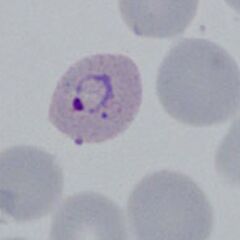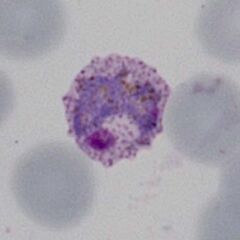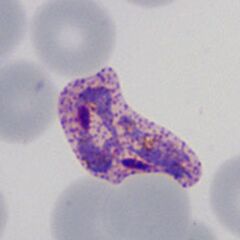P.vivax early trophozoites gallery: Difference between revisions
From haematologyetc.co.uk
No edit summary |
No edit summary |
||
| Line 20: | Line 20: | ||
File:PVET2.jpg|<span style="font-size:80%">'''Early ring form''' Dots are more visible and the red cell begins to show distortion.</span>|link={{filepath:PVET2.jpg}} | File:PVET2.jpg|<span style="font-size:80%">'''Early ring form''' Dots are more visible and the red cell begins to show distortion.</span>|link={{filepath:PVET2.jpg}} | ||
File:PVET3.jpg|<span style="font-size:80%">'''Early ring form''' The ring has thickened with established dots and altered red cell size</span>|link={{filepath:PVET3.jpg}} | File:PVET3.jpg|<span style="font-size:80%">'''Early ring form''' The ring has thickened with established dots and altered red cell size</span>|link={{filepath:PVET3.jpg}} | ||
File:PVET4.jpg|<span style="font-size:80%">''' | File:PVET4.jpg|<span style="font-size:80%">'''Intermediate ring''' Amoeboid parasite within an enlarged distorted red cell with marked dots</span>|link={{filepath:PVET4p.jpg}} | ||
</gallery>" | </gallery>" | ||
Revision as of 14:11, 3 April 2024
Navigation
Go Back
|



